Nayyir Ransome builds relationships between the government and the people it serves to support the ocean. As Senior Analyst with Ocean Conservancy, Nayyir sees the power of small, incremental steps that lead to big impacts for people and waterways.
“I want to encourage people to start where they are. Start with your friends, your church group, your classroom”, Nayyir shared.
Nayyir started advocacy work when they were young, joining the Campfire Youth Legislature as a seventh-grade student in Broadmoor Middle School in East Baton Rouge Parish School System, a school that was closed in 2019. “I was one of the youngest people in the room. The bill that I proposed didn’t even make it out of committee. So, when it was time to come together on the floor and vote on all the bills that came out of committee, I decided that I was going to speak on every single bill that hit the floor, literally, all of them. I ended up winning Outstanding Legislator that year. This honor is given only to one legislator out of almost 500 young people from across the state. I still have the medal. I keep it on my desk lamp with all my other conference tags and medals. It reminds me how much impact a person simply speaking up can have. Whether or not the vote goes your way at that moment, someone is still listening.”

Nayyir got involved in Youth Legislature at a time in Baton Rouge, Louisiana, when many students were feeling unheard, anxious and facing physical displacement after Hurricane Katrina.
Remembering the day Hurricane Katrina landed
On August 29th, 2005, Hurricane Katrina made landfall in New Orleans. At least 1,900 people were killed in the storm and, due to medical and infrastructure complications, post-storm. The devastation of one of the deadliest hurricane seasons in United States history forced 650,000 survivors from their homes—some were never able to return.
“We were out of school for two weeks. Compared to New Orleans where many schools closed for months and others shut their doors permanently, this felt like a privilege. When we went back to school, there were 200 more students in the building. Many families from New Orleans were forced to move to temporary housing in Baton Rouge. Our school was one of many that saw a large influx of students from New Orleans where many schools were unable to reopen due to Katrina. There wasn’t enough space, services or support to handle that, and it became a tense environment for all of us.”
Nayyir’s family moved to Baton Rouge just one year before the storm. Coming from Philadelphia, one of the largest metropolitan cities in the country, Nayyir experienced an intense culture shock when adjusting to life in open-air, sea-centric Southern Louisiana. Nayyir reflected on the contrast of towering buildings and lightning-fast train transport to kids catching mudbugs from the crawfish mounds in the drainage ditches, designed to channel storm water, along roads without sidewalks.
“When I started participating in Camp Fire USA’s Youth Legislature program, I felt intimidated. It was a strange experience, grappling with my own sense of displacement while watching other kids being displaced on such a large scale due to Hurricane Katrina. I wasn’t from the area, but I was there, and I did understand how it felt to be pushed out, to feel discarded.”
New Orleans has a culture unlike any other place in the world, and this rich weaving of languages, ethnicities and histories creates an unshakable strength that still stands today. Yet, the crippling impacts of Hurricane Katrina can be traced through the yet-to-be-rebuilt homes in the Lower Ninth Ward and the reality of long-term health consequences and economic instability for many residents, even now, 20 years after the storm.
Hurricane detection is better than ever, thanks to NOAA
In 2005, the best hurricane detection science provided around a 48-hour warning. The people of New Orleans had less than 24 hours from the time the mandatory evacuation order was issued to when water began to spill over one of the levees.
When Hurricane Katrina developed into a Category 3 storm, receded and then reformed as a Category 5 storm, scientists, local officials and communities scrambled to keep up and spread information quickly.
“We didn’t know what was happening in New Orleans for three days. People with friends and family there were starting to panic.”
Now, thanks to the steady, decades-long efforts of organizations like the National Oceanic and Atmospheric Administration (NOAA), current predictive technologies can provide up to five days warning of extreme weather—enough time potentially to prevent storms from having the same catastrophic impact as Katrina. Yet, the question remains, ”Will we continue funding the hurricane forecasting systems we know are protecting our communities?”
Tell Congress to Protect NOAA Today
Take action to ensure Congress stands up for NOAA, demanding the agency be fully funded and fully staffed.
Understanding NOAA’s vital role during storm season
It might not be clear what NOAA does during hurricane season because much of their work is behind the scenes. The National Weather Service sits under NOAA, and NOAA scientists and professionals are key players in many of the long-term conservation measures, research and technology that prevent the most dire consequences of extreme weather. Their work includes projects that we may not think of as disaster preparedness and resilience, such as coastal restoration initiatives.
NOAA uses a variety of scientific instruments on crafts such as planes, saildrones and gliders to gather data from inside hurricanes. Long term ocean observations contribute to hurricane and weather models. This hurricane season we have an opportunity to speak up about the proposed cuts to NOAA and the vital resources we would lose if these budget changes are approved by Congress. Continuing to fund NOAA is one way to ensure ongoing improvements to weather forecasting, honor those lost to Hurricane Katrina and, in the aftermath, support the people of New Orleans today, as they rebuild and heal.
We can all speak up for life-saving hurricane detection and research
As storm seasons intensify, we need faster, more accurate weather prediction and storm detection more than ever. NOAA is America’s first line of defense against the deadliest impacts of natural disasters on our communities. Yet, NOAA’s funding is facing major cuts that, if enacted, will result in lives lost. We need to keep moving forward keeping in mind and heart the nearly 2,000 people who lost their lives during Katrina, the thousands more New Orleanians who lost their land and legacies, and the hundreds of thousands of people who are impacted by deadly storms in the United States each year.
Looking back, Nayyir can see how these experiences growing up in post-Katrina Louisiana shaped their advocacy and approach to community organizing.
“My time in Southeast Louisiana taught me a lot about people-centered advocacy. Even if we haven’t experienced something at its most extreme, we can find a way to understand the root of it by looking at our lives and the places we live. Ocean Conservancy has helped me to grow in how and why we must work across government agencies and lines to protect our ocean and the people who rely on it.”
Ocean Conservancy works alongside NOAA as a science-led advocacy organization mobilizing federal, state and local action for our ocean. Every investment in NOAA translates into vital seconds, hours and days of response time for communities when hurricane season strikes. The more data we can collect and use to predict the behavior and patterns of storms, the better we can respond and prevent tragedies.
Each year, storm season is intensifying from climate change—and not just on our coasts. Communities throughout the U.S. are affected by hurricanes and floods that threaten lives and livelihoods. We all rely on NOAA’s vital research and tools for weather prediction and extreme weather warnings. These services are a lifeline we cannot afford to lose.
Call on your Congress members today and insist they support full funding and operation of NOAA.
The post Honoring New Orleans 20 Years After Hurricane Katrina Means Protecting NOAA appeared first on Ocean Conservancy.
Honoring New Orleans 20 Years After Hurricane Katrina Means Protecting NOAA
Ocean Acidification
Does Eating Plastics Really Kill Ocean Animals?
The ocean has long been the end of the pipe for plastic pollution, with ocean wildlife bearing the brunt of the overproduction and overconsumption of single-use plastics. The world now produces more plastics than at any point in history—hundreds of millions of tons each year—and more than 11 million metric tons are flowing into the ocean annually. That is equivalent to more than a garbage truck’s worth of plastics entering our ocean every minute.
How does plastic kill ocean animals?
When swallowed, these plastics can be deadly—causing blockages, twisting organs or even puncturing organ walls. Ingested plastics have been found in nearly 1,300 ocean animal species, including every family of mammals and seabirds, and all seven species of sea turtles. Concern about the ecological implications of plastic-induced death rates has fueled calls for policy solutions at every level of government, from the local to the international. However, it is hard to set policy goals without understanding the measurable risk plastic ingestion poses to these species.
Ocean Conservancy scientists, along with top researchers at the University of Toronto, Federal University of Alagoas in Brazil and the University of Tazmania, worked together to answer the question: how much plastic is too much? They sought to determine how much ingested plastic is likely to cause death in seabirds, sea turtles and marine mammals. In other words, we sought to figure out the actual number of pieces and volume of macroplastics (plastics greater than 5 milimeters) that those animals must have in their gut to cause death 90% of the time.
Get Ocean Updates in Your Inbox
Sign up with your email and never miss an update.
How much ingested plastic does it take to kill an ocean animal?
We compiled data from more than 10,000 necropsies—animal autopsies—of seabirds, sea turtles and marine mammals collected between the years 1900 and 2023 where we knew both the cause of death and whether and how much plastic the animal had eaten.
The results were alarming. We were surprised by the very small amount of plastic it takes to kill a seabird. We found that rubber (the kind balloons are made from) is the deadliest form of plastic to seabirds when ingested. It only takes six small pieces of rubber—each, on average, smaller than a pea in size—to kill a seabird.
Sea turtles are also surprisingly vulnerable, given their massive size: Less than half a baseball’s worth of plastics is likely to kill one in two Loggerhead turtles. Shockingly, nearly half of all sea turtles in our database had plastics in their guts at their time of death, which is especially troubling when you consider that five of the world’s seven sea turtle species are International Union for the Conservation of Nature (IUCN) red-listed as threatened.
Our models found that marine mammals are especially vulnerable to the impacts of lost fishing debris, also known as ghost gear; when swallowed, with just 28 pieces—each smaller than a tennis ball—enough to kill a sperm whale. Additional key findings from our research for each of the animal groups we studied include:
- Seabirds
- About 35% of seabirds in our dataset had plastic in their digestive tracts.
- Roughly 5% of seabirds who had plastics in them died specifically from plastic ingestion.
- Hard plastics were consumed more frequently than all other material types, followed by soft plastics, fishing debris, rubber and foams.
- When a seabird consumes only three pieces of rubber, like balloon shreds, our models predict there is a 50% chance this consumption will lead to the animal’s death.
- Marine Mammals
- In marine mammals, fishing debris was the most frequently ingested plastic material, followed by soft plastics, rubber, hard plastics, foam and cloth.
- Roughly 12% of marine mammals in our dataset had plastic in their digestive tracts.
- Nearly 6% of marine mammals from our dataset with plastics inside died as a result of eating those plastics.
- When a marine mammal consumes just 12 pieces of soft plastic—like grocery bags—our models predict a 50% chance this action will lead to the animal’s death.
- Half a soccerball’s worth of soft plastic (by volume) is enough to kill 90% of individuals in most seal, sea lion, dolphin and porpoise species.
- Sea Turtles
- In sea turtles, soft plastics like grocery bags were found to be the most frequently ingested plastic material, followed by fishing debris, hard plastics, foams, rubber and cloth.
- Nearly 50% of individual sea turtles in our dataset had plastic in their digestive tracts
- About 9% of turtles that ingested plastic in our dataset died as a result of eating it.
- Over 4% of all turtles in our dataset died directly from plastic ingestion.
- Just 1.5 golf ball’s worth of plastic (by volume) is enough to kill 50% of adult loggerhead sea turtles.
What can this research do?
This research emphasizes the risks macroplastic pollution poses to the life of marine animals, and the risk varies by species and plastic type. Our findings provide key insights to inform future research and policy actions aimed at reducing plastic pollution and the harm it causes to ocean wildlife and ecosystems. These results also underscore that important interventions like beach cleanups and better management of plastic waste are critical for protecting marine species. Because some types of plastics are deadlier than others when swallowed by marine life, policies targeting those specific items (e.g., plastic bags and balloons) can play an important role in protecting vulnerable species from the harms of plastic pollution in the future.
It is imperative to tackle the global plastics crisis by taking actions at all levels, from local to federal to international. In the U.S., bills like the REUSE Act—bipartisan legislation that would require examination and enhancement of existing reuse and refill systems—is just one way to make a difference. Add your name now and call on lawmakers to support and pass the REUSE Act.
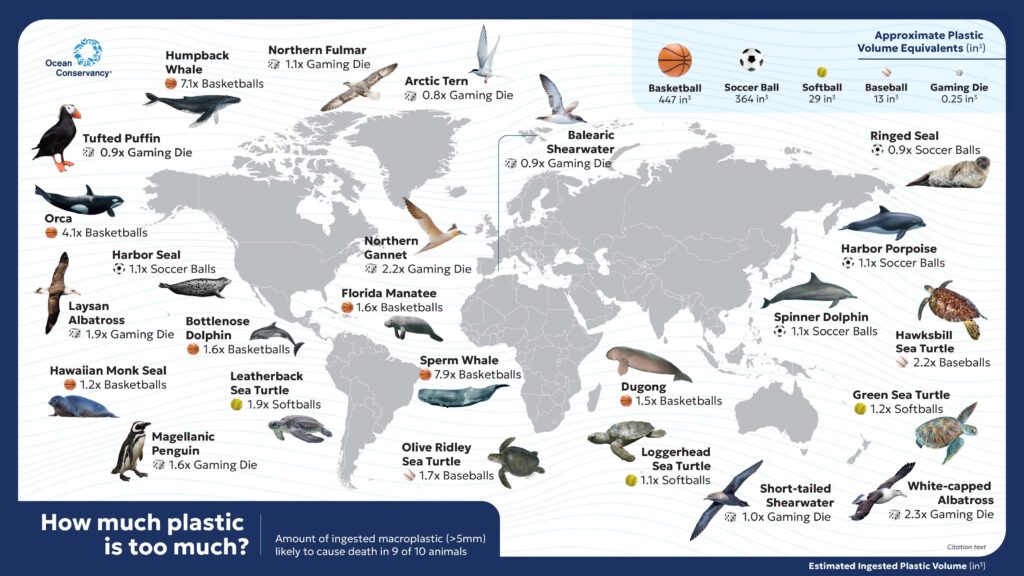
The post Does Eating Plastics Really Kill Ocean Animals? appeared first on Ocean Conservancy.
Ocean Acidification
FYORD Travel Grant Reports: November 2025
From DAAD Summer School to Doctorate: Reflections at ICON 9
Hi! I am Riel Carlo O. Ingeniero from the Chemical Oceanography Department at GEOMAR. I recently had the opportunity to attend ICON 9 (International Conference on Nitrification and Related Processes) last July 2025, one of the leading conferences focused on advances in the nitrogen cycle. It was an honour to be selected to present my research twice – first during the Early Career Workshop on the opening day, and then through a poster presentation on the second day of the main conference.
ICON 9 brought together many of the most prominent names in marine nitrogen cycle research. I was fortunate to meet and engage with inspiring scientists, including Dr. Boran Kartal, Dr. Hanna Marchant from the Max Planck Institute in Bremen, Dr. Claudia Frey from the University of Vienna, Dr. Scott Wankel from Woods Hole Oceanographic Institution, Dr. Bo Thamdrup from the University of Southern Denmark, and Dr. Qixing Ji from HKUST. I also had the chance to see Dr. Bess Ward in person, someone whose work I’ve long admired.

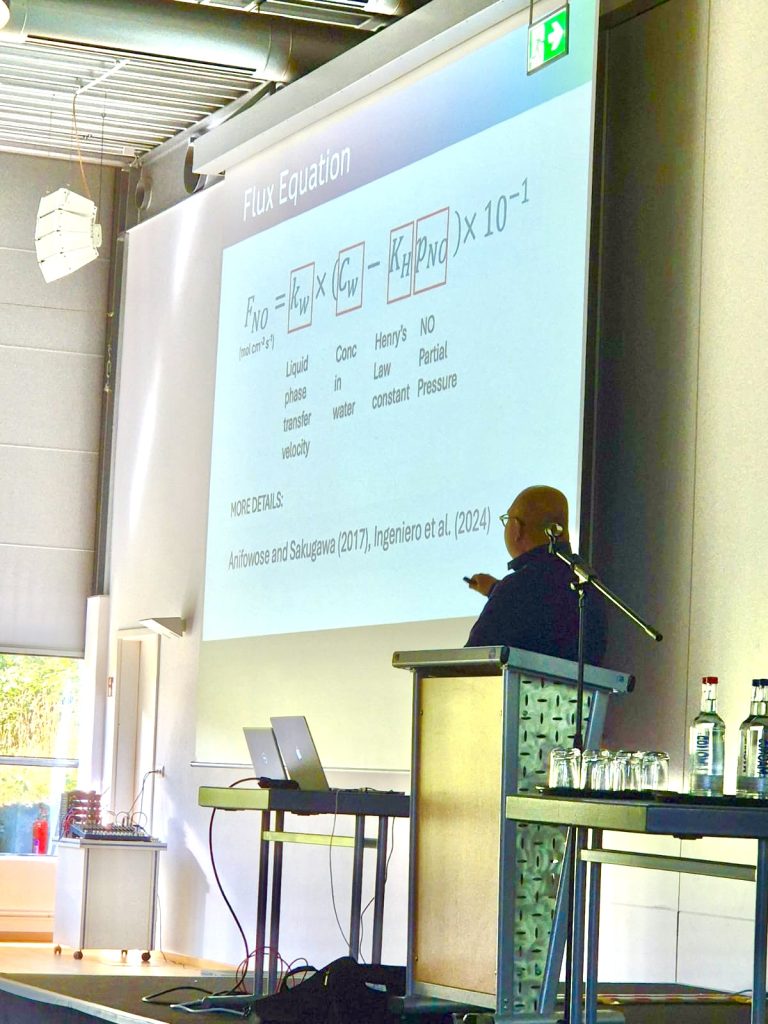
The conference was hosted by the Max Planck Institute for Marine Microbiology in Bremen, a place that holds deep personal significance. I first visited it 13 years ago during a DAAD International Summer School Biodiversity: Diversity of Ecosystems, Genes, and Species at the University of Osnabrück. That visit, including a tour of the Max Planck Institute and MARUM led by Prof. Dr. Rudolf Amann, played a pivotal role in my decision to pursue a career in marine science.
I recently completed my doctorate at Kiel University in June this year, and I am incredibly grateful for the excellent education and world-class research environment that Germany offers. Under the supervision of Prof. Dr. Hermann W. Bange and funded by the DAAD Research Grants – Doctoral Programmes in Germany and the SO305-BIOCAT-IIOE2 project, I have had the opportunity to work on cutting-edge research in marine biogeochemistry, with a particular focus on nitric oxide (NO) dynamics in the ocean.

Presenting in front of over 100 participants during the ICON 9 was not only a rewarding experience but also excellent preparation just days before my doctoral defense and oral examination. Overall, ICON 9 was a meaningful and inspiring milestone, a full-circle moment in my scientific career.
Special thanks to FYORD and Kiel Marine Science for supporting my growth as an early-career marine scientist.
Riel Carlo
15th International Conference on Palaeoceanography, India
When my Uber wound through the chaotic traffic of Bengaluru at 2 am, I knew this conference would be different from the ones I was used to in Germany. I had just arrived in India for the 15th International Conference on Palaeoceanography (ICP15), supported by the FYORD Travel Grant, and was about to spend a week combining science with new cultural impressions.
ICP is a conference with a unique size and structure. It takes place only every three years, and everyone in the field is looking forward to the meeting – indeed, it rather feels more like a “big get-together” than a conference. The program is linear, with one topic per day and no parallel sessions. This allows for focus and provides more room for discussions. I also had the feeling that this format is more comfortable for Early Career Scientists. You don´t have to plan a lot in advance, and you never feel like you´re missing out on anything. But perhaps the best way to capture the spirit of ICP is to take you on a walk through a typical day:
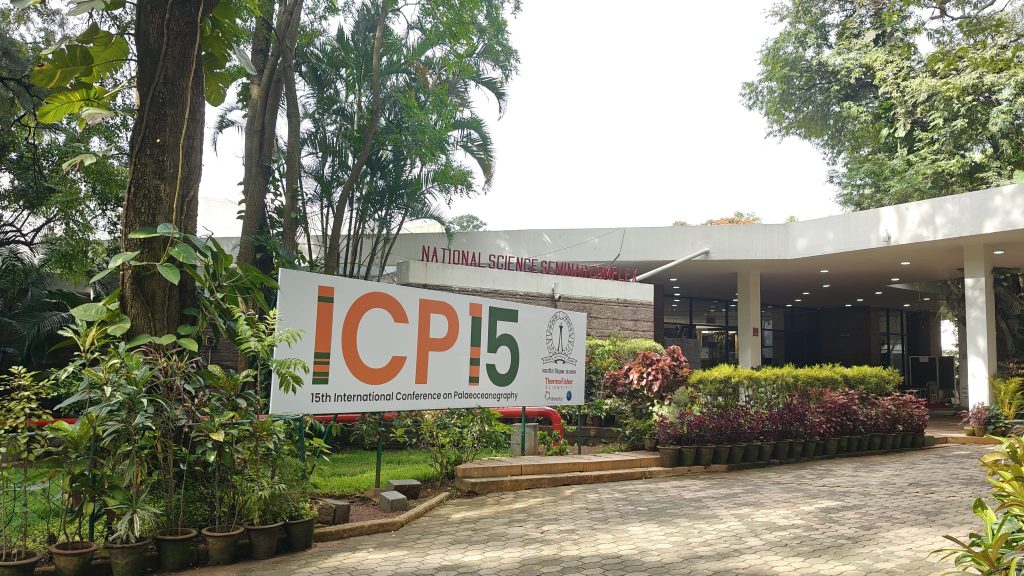
The days started with a short ride in one of the green-yellow tuk-tuks to the conference venue, which was located in one of the few green spots of the city on the campus of the Indian Institute of Science. The mornings were covered by talks by invited speakers. Actually all talks at ICP are only given by invited speakers, and you can only be selected for a talk once in a lifetime! Accordingly, we were able to enjoy some excellent presentations. Before lunch, there was a long plenum discussion with the five speakers from the morning. It was not only a great opportunity to hear different opinions on specific sub-topics, but also to show the connections between different talks, highlighting the most urgent research topics and gaps different groups are currently working on.
During lunch break, we could choose between a variety of typical Indian foods. Even though the chefs took care that the food was not too spicy for the foreign wimps, you never knew if you would sweat after the next bite. The highlight was definitely the daily Dosa, a South Indian speciality: It´s a thin, savory and crispy fried pancake made from fermented dough served with chutneys and sambars.
Long poster-sessions took place in the afternoons. All posters were put up during the whole week, which is also a big difference from huge conferences, where you usually just have a slot of one day or a few hours. It was enough time to look at the other posters, get inspired and exchange ideas. I also presented a poster with the results of the first two years of my PhD, in which I investigate climatically controlled changes in sedimentation at a site in the Southern Ocean close to Antarctica. We were able to link these changes on glacial-interglacial time scales with the ocean circulation and gain insights into the evolution of deep-water formation during times of rapid warming. Onall days, I had fruitful discussions about my work with experts in the field.

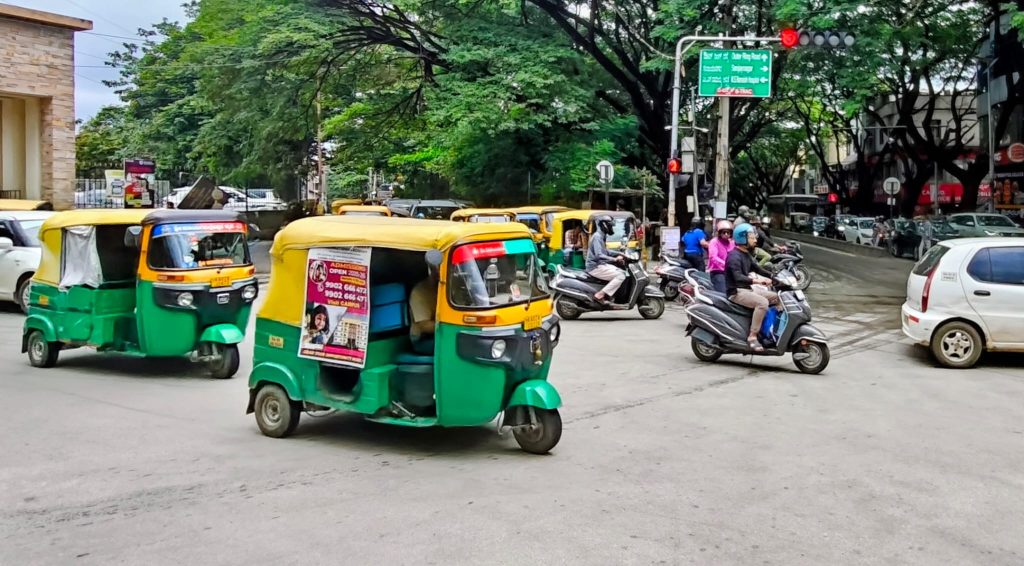
Each day was concluded with a perspective lecture by leading scientists fromthe different fields. These lectures were inspiring and an amazing summary, as they provided a broader context and deep insights into challenges and directions of palaeoceanographic research.
With the end of the scientific program, networking was not over yet, but had just started. The evenings offered a great opportunity to approach people and get into contact in a casual atmosphere. Whether at the icebreaker, conference banquet or at the Palaeomusicology Concert – another ICP tradition, which goes back to Nicholas Shackleton, paleoceanographer and skilled clarinet player. It´s an evening where the musical ones among the scientists show their skills. Singing, bagpipes, and even a small spontaneously formed band made the evening unforgettable!
Looking back, I am grateful for the opportunity to attend ICP15 with the support of the FYORD Travel Grant. It was both a scientific and cultural experience, and a great chance to meet old and new friends and colleagues. I can highly recommend ICP to other early career researchers in the field due to its unique format and special atmosphere!
Moritz
Gordon Research Conference in Animal-Microbe Interactions
My name is Igor Duarte, and I am a third-year PhD student at the Marine Symbiosis Lab, where we explore the origins and molecular novelties of close associations between bacteria and marine animals. The partnership I am mostly focused on in my PhD is between a free-living, mouthless flatworm from the genus Paracatenula, and the chemosynthetic bacteria from the genus Candidatus Riegeria that live inside its cells. In this system where no mouth is present to let nutrients in, the bacteria and are chemosynthetic, which means. After hundreds of millions of years of coevolution, this highly specialised symbiosis is now the only way by which each of these organisms can survive, and a topic of high interest to understand the evolution of such longstanding partnerships.

The FYORD Travel Grant programme supported my participation in the Gordon Research Conference (GRC) in Animal-Microbe Interactions, which this year took place in Portland, Maine, USA. Throughout the five days of the Conference, about 180 attendees from all over the world shared their main findings from the field of symbiosis, including the topics microbiome, intracellular microorganisms, parasitism, and evolution and molecular novelties of symbiotic associations. Additionally, the event was combined with a Gordon Research Seminar, which allowed early-career researchers to network more freely and exchange experiences from each one’s PhD and postdoctoral trajectories. I had the opportunity to present a poster entitled “Clade-specific genome evolution of Ca. Riegeria, the obligatory endosymbiont of a mouthless flatworm”, where I summarised the latest results from my PhD project.
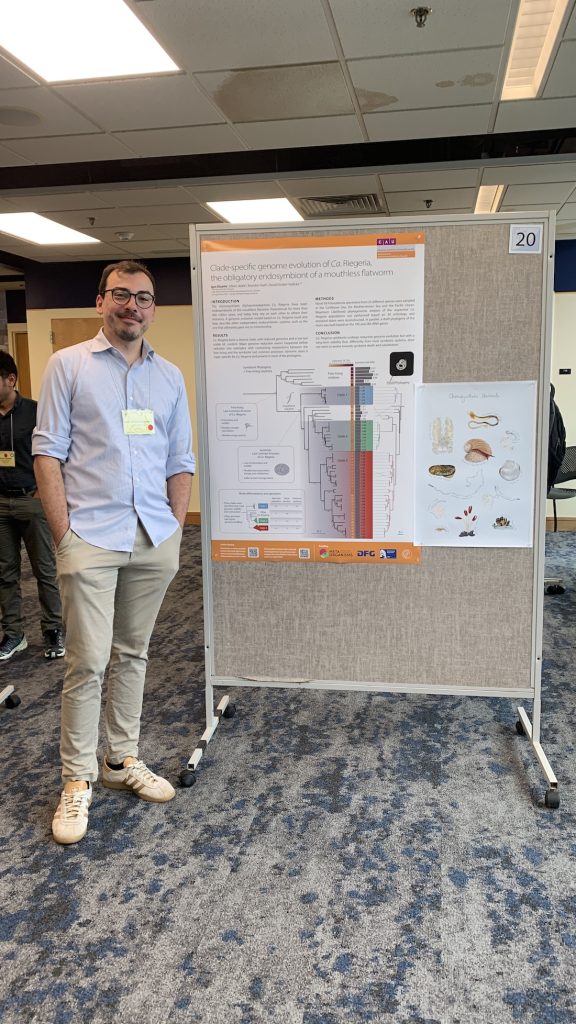
What I liked most about participating in this conference was how nicely it was conceptualised, with the goal of creating a relaxed environment to foster relevant connections between new and veteran attendees. In such a set-up, not only was I introduced to cutting-edge methods which are being used to answer relevant questions from the field, but I also had the opportunity to discuss them directly with the authors. Another positive aspect was that the speakers were encouraged to share problems that they faced during their experiments to show what real science looks like and to showcase how such issues can be overcome. Overall, I believe the conference was a game-changer for my PhD as I could get to know the main researchers in the field, whom I had so far only read about, and build the feeling of being part of a diverse community of symbiosis-enthusiasts.
Igor
Ocean Acidification
Drifting in the Post-PhD Current
Delivering
Five years into my PhD and I still wasn’t done. To be fair, I hadn’t exactly had an easy ride, starting just weeks before COVID lockdowns were announced, becoming a mother in my second year, and trying to build a new model system from scratch (Pipefish and their male pregnancy are adorable, but they don’t always make life easy). My work was trial and error, and it took me more than a year just to find a story worth telling. But eventually, the words came together. I had a draft for my first chapter. It was written! Only… was it enough? Basic research with no direct application, no flashy headline — just curiosity-driven science. Many of us know that creeping voice: does this even matter?
So, instead of calling it finished, I dove into one more dataset. In a rush of determination, I moved back into my old childhood bedroom at my parents’ house, spending days and nights analysing, writing, rewriting. By mid-November I had a plan: “Done by Christmas.”
Of course, life had other ideas. A hand surgery in between (note to future PhDs: don’t do that with a deadline). But somehow, even with one hand and one finger sticking out of a cast, I wrote. Introduction. Synthesis. Outlook. Acknowledgements.
By Christmas I wasn’t done, but close. My mother stepped in to take care of my daughter while I revised paragraph after paragraph under the Christmas tree. And then, in early January 2025, the moment came: university reopened, I submitted my dissertation, and it was gone. Done. Crazy. For two days, I let myself breathe and celebrate. Then reality hit: only six weeks until my defence.
Defending
Days passed and my defence presentation kept growing. Twenty slides, then thirty, then sixty. Every time I thought it was enough, I added more — extra data, backup information. Not because I wanted to show it all, but because I wanted to be ready for those tough questions. At the same time, I knew this wasn’t just about surviving the defence. I wanted to celebrate it. I booked a big conference room, reserved a restaurant table, and sent out invitations. And suddenly it felt real: my family travelling in from far away, a friend making the trip from abroad, old classmates and colleagues all saying yes. That was overwhelming in the best way. Practising my talk became part of my daily routine. Alone in my office and in front of colleagues or friends. I have to admit: I’ve always liked presenting more than drowning in raw data, so this part was actually… fun.
The morning of the defence, I woke up to an email that made my heart stop: Water pipe leakage at university. All buildings evacuated. No exams allowed. Seriously? After weeks of preparing, was it all about to fall apart? What I hadn’t expected was the incredible support around me. Within minutes, my PI had secured a new venue. Huge shout-out to the Marine Science Campus for stepping in and hosting me! And somehow, despite the last-minute chaos, everyone showed up.
During the defence itself, my brain switched to autopilot. Over forty pairs of eyes were on me, waiting for me to present and defend five years of work. The questions that followed were tough and sometimes tricky, but also sparked real conversations. Ninety minutes passed in a blur. Then it was done. I was done. A doctor of natural sciences – me? Hell yeah. The rest of the day was exactly what I had dreamed of: celebrating, telling stories, reliving the journey with the people who had been part of it. Finally enjoying this thing, I had worked toward for over five years. Relief and happiness like I had never felt before. And, as the cherry on top, I got the nicest doctoral hat that I could have imagined – with a glowing giant microbe and two crocheted guinea pigs perched proudly on top.

Drifting
The night of my defence, I went to bed expecting to wake up reborn – full of joy, energy, freedom. Instead, I woke up tired. Deeply tired. And strangely quiet inside. There was still paperwork to finish before I could officially call myself a doctor, and manuscripts waiting for submission. But the constant pressure, the expectations, the dependence on PIs, the weight of proving myself worthy of a title that even shows up in your passport, was suddenly gone. In its place came exhaustion, but also a growing sense of lightness. I gave myself a week to move slowly: sleeping, recharging, joining a retreat with my colleagues. Bit by bit, relief started to settle in. I really made it.
And the moment it truly sank in wasn’t the defence or the party, but a few weeks later. Walking out of the administration building at Kiel University with my PhD certificate in hand – that was the moment it felt real.
Kim
-
Climate Change4 months ago
Guest post: Why China is still building new coal – and when it might stop
-
Greenhouse Gases4 months ago
Guest post: Why China is still building new coal – and when it might stop
-
Climate Change2 years ago
Spanish-language misinformation on renewable energy spreads online, report shows
-

 Greenhouse Gases2 years ago
Greenhouse Gases2 years ago嘉宾来稿:满足中国增长的用电需求 光伏加储能“比新建煤电更实惠”
-
Climate Change Videos2 years ago
The toxic gas flares fuelling Nigeria’s climate change – BBC News
-

 Climate Change2 years ago
Climate Change2 years ago嘉宾来稿:满足中国增长的用电需求 光伏加储能“比新建煤电更实惠”
-

 Carbon Footprint2 years ago
Carbon Footprint2 years agoUS SEC’s Climate Disclosure Rules Spur Renewed Interest in Carbon Credits
-
Climate Change2 years ago
Why airlines are perfect targets for anti-greenwashing legal action


